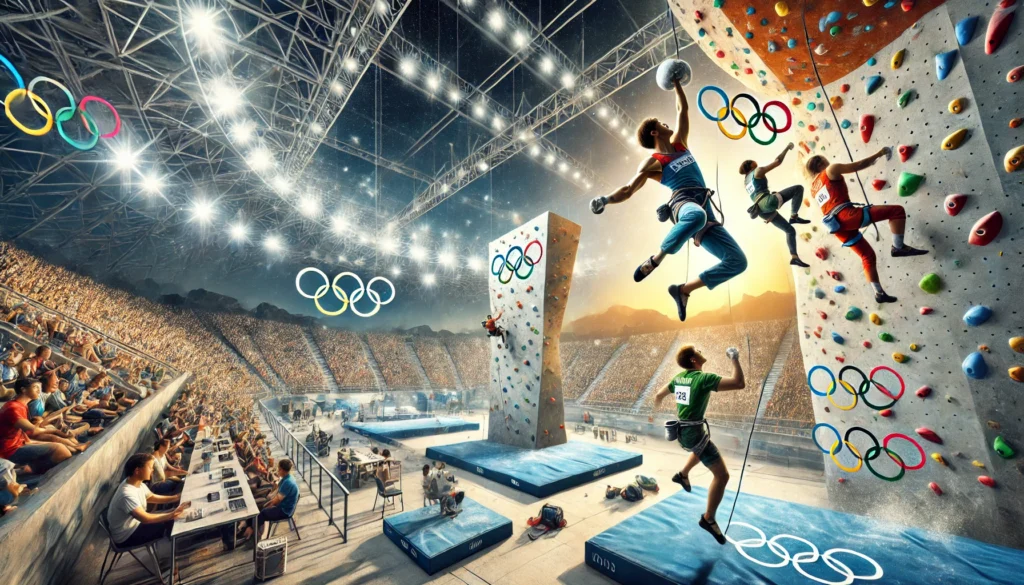Introduction to Sport Climbing in the Olympics
Sport climbing has taken the world by storm, and its inclusion in the Olympics has only amplified its popularity. The sport climbing combined Olympics event showcases the ultimate test of strength, endurance, and technique. This discipline includes speed climbing, bouldering, and lead climbing, making it a thrilling and challenging competition.
Since its debut in Tokyo 2020, sport climbing has attracted a massive audience, and it continues to evolve as we approach Paris 2024 and future Games. The unique sport climbing combined format ensures that climbers must master all three disciplines, making the competition fierce and exhilarating.
This guide explores everything about the sport climbing combined Olympics, from its history to its future. Whether you’re a beginner or an experienced climber, this in-depth article will help you understand how sport climbing works in the Olympics, including rules, scoring, and top athletes to watch.
The Evolution of Sport Climbing in the Olympics
From Indoor Walls to the Olympic Stage
Sport climbing began as an indoor alternative to traditional rock climbing, growing into a competitive sport over the years. The push for Olympic inclusion started in the early 2000s, but it wasn’t until 2016 that the International Olympic Committee (IOC) officially approved it for the Tokyo 2020 Olympics.
Initially, the Olympic format combined three different climbing disciplines into one event, requiring climbers to be skilled in speed, bouldering, and lead climbing. This format was unique, as traditional climbing competitions usually separate these disciplines.
Changes for Paris 2024 and Beyond
In Tokyo 2020, sport climbing was introduced as a single combined event, meaning all climbers had to compete in all three disciplines. However, due to feedback from athletes and audiences, the format has been slightly adjusted for Paris 2024:
- The speed climbing event will now be separate, allowing speed specialists to compete independently.
- The bouldering and lead climbing disciplines will remain combined, ensuring well-rounded climbers still face a unique challenge.
- This change allows a broader range of climbers to compete and improves the fairness of the competition.
Understanding the Sport Climbing Combined Format
What is the Sport Climbing Combined Event?
The sport climbing combined Olympics event tests athletes in three disciplines:
- Speed Climbing – A head-to-head race up a standardized climbing wall.
- Bouldering – Climbers must solve short, powerful climbing problems without ropes.
- Lead Climbing – Climbers attempt to climb as high as possible on a tall route within a set time.
Why is the Combined Format Unique?
Unlike other competitions where climbers specialize in one discipline, the sport climbing combined format forces athletes to be all-rounders. They must train for speed, technique, endurance, and problem-solving, making it a complete test of a climber’s abilities.
Sport Climbing Olympics: Rules and Scoring System
Understanding the sport climbing scoring system can be challenging, but here’s a simple breakdown:
| Discipline | How It Works | Scoring Method |
|---|---|---|
| Speed | Climbers race up a 15-meter wall as fast as possible. | Fastest time wins. |
| Bouldering | Climbers solve short, difficult climbing problems. | Based on the number of tops and attempts. |
| Lead | Climbers try to reach the highest hold on a tall wall. | Points awarded for each hold reached. |
For the combined event, scores from each discipline are multiplied to give a final ranking. This system ensures a balanced competition and rewards the most versatile climbers.
Training for Sport Climbing Combined
To compete at the highest level, Olympic sport climbing athletes undergo intense training regimens. Their training includes:
- Strength training for explosive power in speed climbing.
- Technical practice for bouldering problem-solving.
- Endurance training for lead climbing.
- Mental preparation to stay focused under pressure.
Top climbers like Janja Garnbret and Adam Ondra have perfected this training, making them some of the biggest sport climbing Olympic champions.
Notable Athletes and Medal Contenders
Some of the top sport climbing medal contenders include:
- Janja Garnbret (Slovenia) – The dominant female climber and Tokyo 2020 gold medalist.
- Adam Ondra (Czech Republic) – A lead climbing specialist and fan favorite.
- Tomoa Narasaki (Japan) – A speed and bouldering expert.
- Brooke Raboutou (USA) – A rising star in the women’s category.
With the new Paris 2024 format, more specialists will have a chance to shine in their respective disciplines.
The Future of Sport Climbing in the Olympics
With its growing popularity, sport climbing in the Olympics is likely here to stay. Future competitions may:
- Introduce new formats to allow more climbers to compete.
- Add additional climbing events such as deep water soloing.
- Expand the Olympic climbing program to feature more medals.
The future looks bright for sport climbing, and it will continue to inspire the next generation of climbers worldwide.
Conclusion: Why Sport Climbing Combined Olympics is So Exciting
The sport climbing combined Olympics is one of the most thrilling events in the Games. It brings together speed, power, and endurance, making it a true test of the best climbers in the world. With its evolving format and passionate athletes, sport climbing is set to become a staple Olympic event for years to come.
FAQs
Q1: What are the three disciplines in sport climbing combined?
A: The event includes speed climbing, bouldering, and lead climbing.
Q2: How is the winner determined in the combined format?
A: Scores from all three disciplines are multiplied to determine the final ranking.
Q3: Who are the top contenders in Olympic sport climbing?
A: Climbers like Janja Garnbret, Adam Ondra, and Tomoa Narasaki are among the best.
Q4: What changes were made for Paris 2024?
A: Speed climbing is now a separate event, while bouldering and lead climbing remain combined.
Q5: How can I start training for sport climbing?
A: Beginners should practice strength training, climbing techniques, and endurance exercises.
